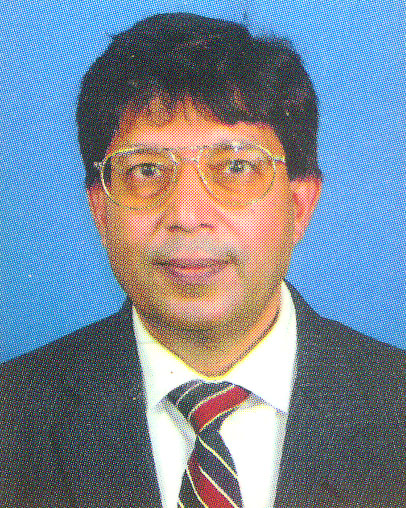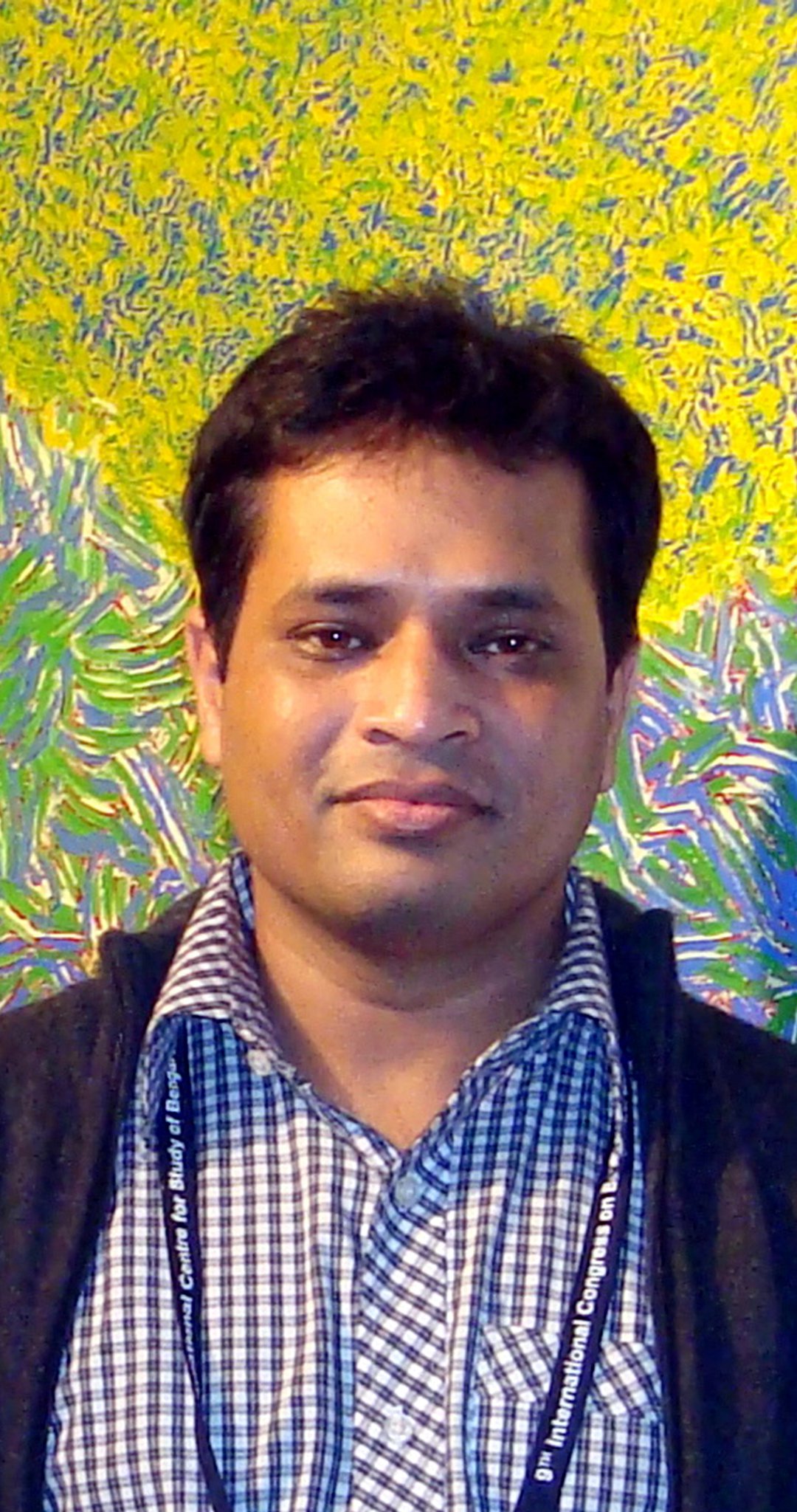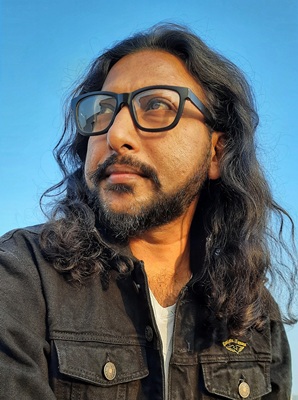Trina Haque, Chairman, ICSBA
Trina Haque holds Masters in Economics from Wellesley College, USA and M.Phil in Economics from Cambridge University. She got 4th place in merit list from Dhaka board in 1979 secondary examinations and 1st place in merit list from Dhaka board in 1981 higher secondary examination. Before joining the World Bank, she worked as a Research Fellow at BIDS, a renowned economic research institute of the Government of Bangladesh and later joined the World Bank as an Economist. As an officer of the World Bank, she had various responsibilities in East, West and Central Africa, Middle East, North America, Central America. Currently, she is working as a Practice Manager in the Health, Nutrition and Population Global Practice of the World Bank in South Asia. Professional Economist Trina Haque is also known as a poet and a fine photographer.
The process of appointing an Executive Director is underway. Archaeologist Dr. Md. Nasir Uddin (Mobin) is currently serving as the acting Executive Director.
Dr. Mohammad Yusuf Siddiq: Visiting Professor

EDUCATION: Post Doctorate, Center for Middle Eastern Studies, Harvard University, Cambridge, Massachusetts, 1991; Post Doctorate, Fine Arts Department (Aga Khan Program for Islamic Art and Architecture), Harvard University, Cambridge, Massachusetts, 1989; Ph.D., Department of Islamic Civilization, Umm al-Qura University, Makkah, Saudi Arabia, 1987. PROFESSIONAL EXPERIENCE: Visiting Professor, International Centre for the Study of Bengal Art, Dhaka, 2016 –Current); Faculty Member, Department of History and Civilization, University of Sharjah, U.A.E., 2001 – 2007; Founding Chair and Faculty Member, Department of Arabic and Islamic Studies, Zayed University, U.A.E., 1998 – 2001; The Fellow of the Year 1997-98, Islamic Legal Studies Program, Harvard University, 1997-98; Senior Fellow, Center for the Study of World Religions, Harvard University, 1996-97; Associate Professor, Department of Islamic Studies, Islamic University, Bangladesh, 1996 -1997 (Chair of the Department during 1991-92); Fellow, Center for Middle Eastern Studies, Harvard University, 1989-95. Academic activities involved lectures, writing research papers, and chairing the study group on Islam in Medieval South Asia. Works included a research project on the Persian and Arabic inscriptions of medieval South Asia, funded by a research grant from Foundation Max Van Berchem in Geneva, Switzerland; Research Associate and Post Doctoral Fellow, Aga Khan Program for Islamic Art and Architecture, jointly at M.I.T. (Massachusetts Institute of Technology) and Harvard University, 1987-89; Visiting Mellon Fellow, Oxford Centre for Islamic Studies, St. Cross College, Oxford University, U.K., 1991-92. Academic activities included a major research work on the social and intellectual history of the Islamic world; PUBLICATIONS: Books: Arabic and Persian Inscriptions of Bengal, Dhaka: ICSBA (International Centre for the Study of Bengal Art), 2018 (forthcoming); A Descriptive Catalogue of the Arabic and Persian Inscriptions in the Bangladesh National Museum, (Dhaka: Bangladesh National Museum, 2017); Epigraphy and Islamic Culture: Inscriptions of the Early Muslim Rulers of Bengal 1205 – 1494 Oxon, U.K., Routledge: 2016; ‘Muslim Banglar Itihase Shilalipi Chorchar Gurutto’ in Itihaser Pothe Pothe (Anirudhdha Roy Felicitation Volume, [Bengali text], ed. Ratnabali Chattapadhay and Susnat Dash (Kolkata, Progressive Publishers, 2016); Mashriq men Islami Tahzib ke Athar : Bangal ke ‘Arbi wa Farsi Katbat, Islamabad: National University of Science and Technology [NUST], 2013, (Persian translation by Layla Musazadeh, Katibaha, Tehran: Kalk Shirin, 2015); ‘Khānqāh, Madrasa, and the Transmission of Kowledge in Bengal Tradition: Some Early Epigraphc Evidences’, in Studies in South Asian Heritage: Essays in Memory of M Harunur Rashid, ed. Mokammad H Bhuiyan. Dhaka: Bangla Academy (2015): 373-402; Banglar Itihase Arbi wo Farsi Shilalipi Chorchar Gurutto’ (Importance of Arabic and Persian Epigraphy in Understanding the History of Bengal), in Centenary Commemorative Volume, ed. Alamgir Muhammad Serajuddin, et al. Dhaka: Bangladesh National Museum (2013): 249-76; Historical and Cultural Aspects of the Islamic Inscriptions: A Reflective Study of Some New Epigraphic Discoveries (Dhaka: International Centre for the Study of Art, 2010) “Spiritual Dimensions of Islam: Sufism, Sheikhs and Khanqahs of Bengal”, in The Varied Facets of History: Essays in Honour of Aniruddha Ray, Edited by Ishrat Alam and Syed Ejaz Hussain, (Delhi: Primus Books, 2011), 125-159; An Epigraphical Journey through Muslim Bengal (Written in Arabic under the title: Rihla Ma‘a al-Nuqush al-Kitabiyyah al-Islamiyyah fi Bilad al-Bangal رحلة مع النقوش الإسلامية في بلاد البنغال: دراسة تاريخية وحضارية، دمشق: دار الفكر) Damascus: Dar al-Fikr, 2004; “Ecology in the Islamic East,” in Islam and Ecology: A Bestowed Trust, Edited by Richard C. Foltz, (Cambridge: Harvard University Press, 2003); The Encyclopaedia of Islam, New Edition (Leiden: E. J. Brill) s.v. "Ruhmi," "Satga’on," "Sikandar Shah," "Sonarga’on," "Sundarban," "Sylhet," "Tirhut," "Tribeni," "Titumir," "Tughra' in Muslim India," and "Yaghistan."; “Splendour of Writing in Muslim Bengal Architecture” in Abhijñan: Studies in South Asian Archaeology and Art History of Artefacts, Felicitating A.K.M. Zakariah, Edited by Shahnaj Husne Jahan, British Archaeological Reports, International Series S1974 (Oxford, 2009), 130-143; “Adina Masjid Inscriptions at Pandua,” in Abdul Karim Commemoration Volume, Edited by Shamsul Hossain, (Dhaka: Adorn Publication, 2008), 53-63; "Epigraphy and Islamic History," in Inscriptions as Art in the World of Islam, edited by Habibeh Rahim (New York: AMS Press, INC., [Forthcoming]). Research Papers and Scholarly Articles: “Inscriptions as an Important Means for Understanding History of the Muslims”, Journal of Islamic Studies (Published by Oxford University Press for Oxford Centre for Islamic Studies, University of Oxford, England, UK) vol. 20, issue 2 (May, 2009), 213-250; “Calligraphy and Islamic Culture: Reflection on Some New Epigraphic Discoveries in Gaur and Pandua,” Bulletin of the School of Oriental and African Studies (Published by Cambridge University Press for University of London) no. 1, vol. 68 (2005): 21-58; "An Epigraphical Journey to an Eastern Islamic Land," Muqarnas: An Annual on Islamic Art and Architecture (Published by E. J. Brill, Leiden, Netherland for Harvard University) 7 (1990): 83-108; “Diffusion of Islam & Articulation of a New Order,” Journal of the Research Society of Pakistan, vol. 45, no. 2 (January, 2009): 1-64; “Epigraphy in the World of Islam: Some Newly Discovered Inscriptions” Pratnatattva (Journal of Archaeology), volume 16 (June 2010): 45-62; “Eden Garden and Paradisiacal River in Worldly Palaces: Water Cosmology in Some Arabic Verses in Gaur (Bengal) and Granada, (Andalusia)” Journal of Bengal Art, volume 11 (2008): 227-236; “Cultural Continuity in the Medieval World of Islam,” Sharjah University Journal for Shari‘ah and Humanities, no. 2, vol. 2 (2008); " Mosque as a Form of Socio-Cultural Expression," Journal of the Asiatic Society of Bangladesh, no. 2, vol. 52 (December 2007): 197-212; “Advent of Islam in Bengal,” Dhaka University Journal for Islamic Studies, no. 1, vol. 1 (2007); "Epigraphy as a Source for the Study of Islamic Culture," Journal of the Asiatic Society of Bangladesh Golden Jubilee Volume, no. 1-2, vol. 50 (2005): 113-140; "The Rise of Islam and Articulation of a New Order," Journal of the Asiatic Society of Bangladesh, no. 1, vol. 45 (June 2000); "Masjid, Madrasah, Khanqah and Bridge: Reflections on Some Islamic Inscriptions," Journal of the Asiatic Society of Bangladesh, no 2, vol. 42 (December 1997); "Epigraphy and Islamic Culture," Muslim Education Quarterly, no 3-4, vol. 8 (1991-92); "Arabic Calligraphy in the Early Inscriptions," Muslim Education Quarterly, no 3, vol. 2 (1985): 77-88; ‘Titles and Islamic Culture’, Islamic Studies volume 54, no. 1-2 (Islamabad: Spring-Summer 2009): 39-92; ‘Two Fabulous Inscriptions of the Sultanate Citadel in Gaur’, Samskrtavarttikā vol. 1, Part 2 (Kolkata): 196-215. 2017;‘Lipikola ebong Islami Sanskriti: Banglar Sthapotte Arbi wo Farsi Shilalipir Boichitra’, Islamic Foundation Potrika vol. 57, no. 1 (Dhaka): 5-29; ‘Banglay Islam: Ekti Porjalochona [Bengali text]’, Itihas Prabandhamala vol. 15, no. 14 (Dhaka: Itihas Academy): 73-90; ‘Gaurer Shahi Kellar Duti Torondarer Shilalipir Upakhhan’, Bangladesh Asiatic Society Patrika vol 35, Winter Issue (Dhaka: Asiatic Society of Bangladesh): 115-138.
MOHAMMAD NASIR UDDIN (Mobin),PHD : Deputy Director

MOHAMMAD NASIR UDDIN Mobin, (Cell: 01911036083; Email: mobinarch@yahoo.com); Graduate,Post-Graduate & PhD. in Archaeology, Jahangirnagar University; Major research area: Buddhist architectures in Southeast Asia; PUBLICATIONS:Various Architectural Issues to Understand Early Medieval Buddhit Monuments of Bengal: Based on Excavated Monuments of Lalmai-Mainamati Area,Published in Journal of Bengal Art, Volume 25,ICSBA, Dhaka, 2020; Archaeological Matrix of Bangladesh Prehistory, Published in Journal of Bengal Art, Volume 20, ICSBA, Dhaka, 2015; Bricks of Early Historic Bangladesh: Review of Excavated Data, Published in Journal of Bengal Art, Volume 19, ICSBA, Dhaka, 2014; Materials and Components of Early Historic Architectures of Bangladesh: Review of Pre-Gupta Phase Archeological Materials, Published in Journal of Bengal Art, Volume 18, ICSBA, Dhaka, 2013; Excavated Buddhist Monasteries of Bangladesh: Status of Measurement Records and Their Mode of Constructions, Published in Journal of Bengal Art, Volume 17, ICSBA, Dhaka, 2012; Unusual Objects from Excavated Buddhist Monasteries of Bangladesh, Published in Journal of Bengal Art, Volume 16, ICSBA, Dhaka, 2011; Roof of Early Architectures of Bangladesh: Material, Technique, Pattern etc. from 4th century BCE to 12th century CE, Published in Journal of Bengal Art, Volume 15, ICSBA, Dhaka, 2010; Household Objects from Excavated Archaeological Sites of Bangladesh and its Domestic Context, Published in Journal of Bengal Art, Volume 13- 14, ICSBA, Dhaka, 2009; Decorative Aspects of the Excavated Buddhist Monuments of Bangladesh, Published in Journal of Bengal Art, Volume 11- 12, ICSBA, Dhaka, 2008; Pre-Muslim Terracotta Ringwell: Excavated Remains from Mahasthangarh, Published in Kalhar, Kaveri Books, New Delhi, 2007; Pre-Muslim Landscape of Savar and Nature of Buddhist Settlement in Bangladesh, Published in HHRK Commemoration Volume, ICSBA, Dhaka, 2001; Bebachchhed: Paribahan Seba Khat (in Bengali), Published in Banglar Sangbad (Quarterly Magazine on Development Economics), Year- 11, No-2 Dhaka, 2001; Prasanga: Pratnatattva Koun Dharaner Discipline (in Bengali), Published in Shiksha Barta (A Monthly Magazine on Education), Year-7, No-7, Dhaka, 1998; Manab Bibartan Chitre Purushmukhita (in Bengali), Published in Biggan Chetana Patrika (journal on Science), Year-1, Vol-7, Dhaka, 1997.
S M SAIFUL ISLAM, PHD : Research Fellow

Dr. S M Saiful Islam is an Art-historian of Medieval India and Bengal. He has prime affection in Indian Mughal paintings, following the methodology of Mughal historiography. Mr. Saiful is identified as a Visual Artist as well as known for his art, research and writings. Saiful was born in Cox's Bazar District in Bangladesh in 01 January 1978. He started drawing in his childhood. He completed his BFA (honours) and MFA from the Department of Drawing and Painting at the Faculty of Fine Arts, University of Dhaka. He also completed his prestigious PhD degree under the Department of Islamic History and Culture at the same University. His interests on the history, art, culture, heritage and Sufism of India and Bengal including Central Asia.